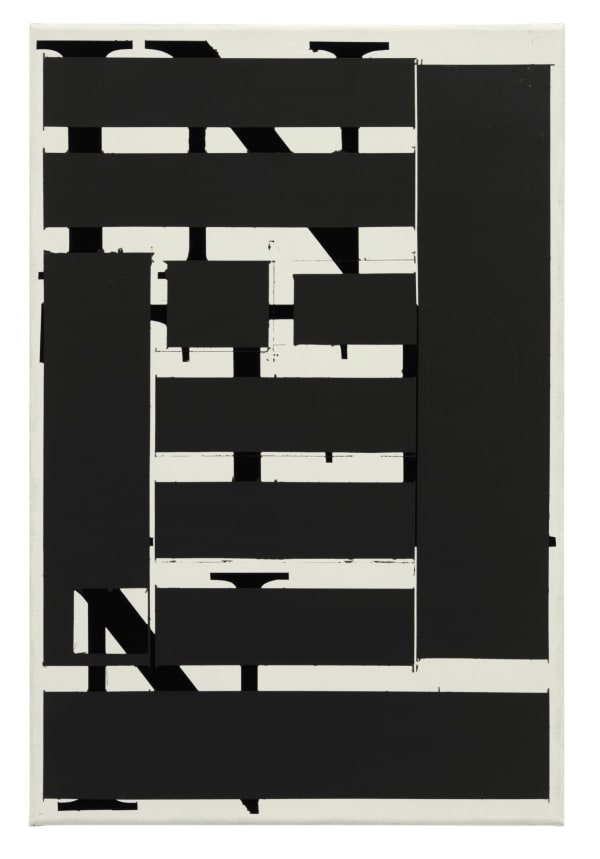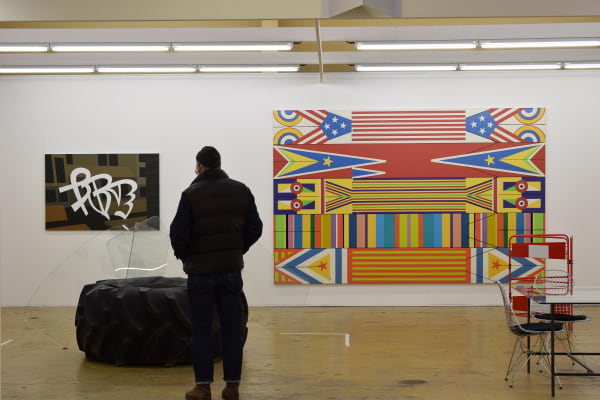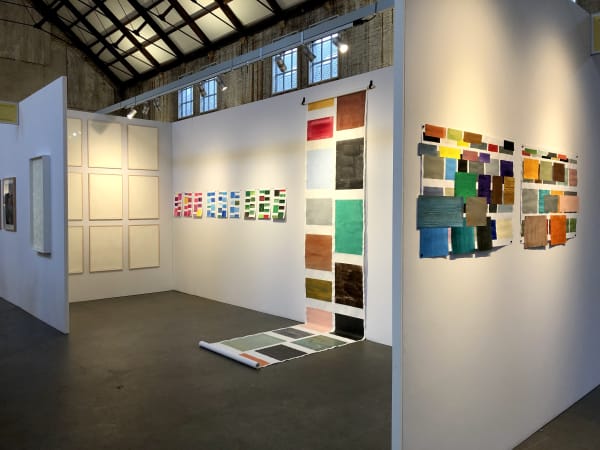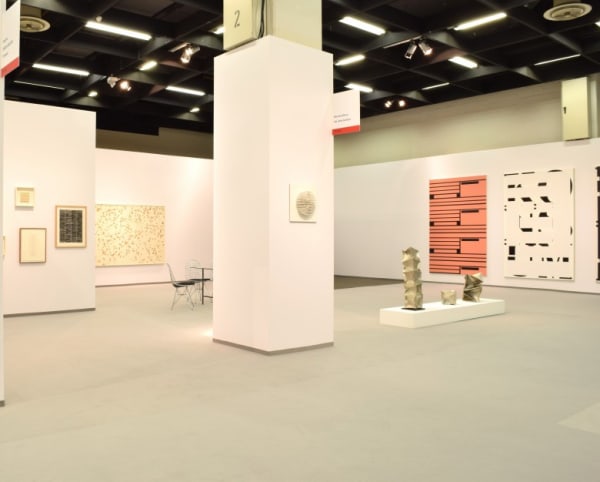Ronald de Bloeme Dutch, b. 1971
The examples for my paintings comprise everyday "Found Footage" materials such as sewing sample cards, paper airplanes, chewing gum wrappers or cigarette packs. All these materials are so-called communication systems; their purpose is to convey a message. Lines, colours, figuration and abstraction have been diverted so far from reality and been composed for a function that the image they form intrigues me. Composition is the wish to communicate. The most important thing here for me is whether the above-mentioned examples are still recognisable for the conditioned perception of the public, me first, at the moment you change these through a tiny image manipulation, by, for example, replacing the text (of the packaging) with black bars (censoring), deleting figuration from a particular packaging or showing the image in a negative form (inverting it as the opposite of positive).
All the material comes straight from my personal environment. I scan these materials into my computer and edit them digitally. The materials have been composed with the greatest possible care and I decompose them. I put the different image segments together again in a new image (collage) in which the reference remains latently visible, even though the codes are no longer legible as such. The result is an image with high information density in powerfully recognisable colours and shapes. What matters to me here is the tension between abstraction and pop, whereby I continually make my way between manipulation and disassociation. Ultimately, I transform these decompositions into my paintings. The computer is like an intermediary between me and the paintings.
For the last few years the censor has become more and more important within my image compositions. This has actually always been a component of my work but I now want to make it more visible. I place the black censorship bars over the logos of Stern and Heineken or even over my own paintings in order to create new and exciting image information for myself.
I also develop paintings in which some image segments give the delusion of a particular example (for example the colours and form of Marlboro). A new technique here is using a mechanical sander to rub down my paintings. This creates structures over which I have only partial control. The new surface, where the sanding brings underlying colours to the top, is the result of me placing cardboard (packaging material) behind the painted surface. These counterfeited examples achieve an impression of packaging or of a visual message. My paintings are only made using matt and gloss paint in order to stay as close as possible to the identity of the packaging world. In these works the familiar "Found Footage" examples stand as polar opposites to the painterly treatments I have added. However the viewer perceives both of these image segments as a repeated message, a part of the whole. Here, my challenge is to test the viewer's conditioned perception yet again. This image manipulation enables me to smuggle my own information into the perceived image - perception piracy." - Ronald de Bloeme (*1971)
-

Art Rotterdam 2020
Stand 68 5 - 9 Feb 2020RONALD DE BLOEME | JURRIAAN MOLENAAR || MARINUS BOEZEM | CAREL VISSER STAND 68 This year at Art Rotterdam Ronald de Bloeme (*1971), living in Berlin and alumnus of the...Read more -

Art on Paper Amsterdam 2019
Stand 36 26 - 29 Sep 2019Drawings that do not necessarily result in a painting, but do have a right to exist outside the studio, are called Kurzstrecken by Ronald de Bloeme . It is a...Read more -

Lang niet gezien, nog niet gezien
6 Apr - 1 Jun 2019A group exhibition featuring fifty key artworks from the Borzo collection, spanning approximately the past fifty years ; from Leon Adriaans to Bob Bonies, from Jan Schoonhoven to Rakuko Naito,...Read more -

Ronald de Bloeme | Alternative Facts
24 Nov - 23 Dec 2017'Alternative Facts' by Jannet de Goede Curator Kröller-Müller Museum Since January 22nd 2017 a fact is no longer an event or circumstance the truth of which can be taken as...Read more -

Art Cologne 2017
Stand A1 26 - 29 Apr 2017During Art Cologne 2017 we will show a number of beautiful reliefs and drawings by Jan Schoonhoven. In addition, we will show a large work by Herman de vries: 'unter...Read more













